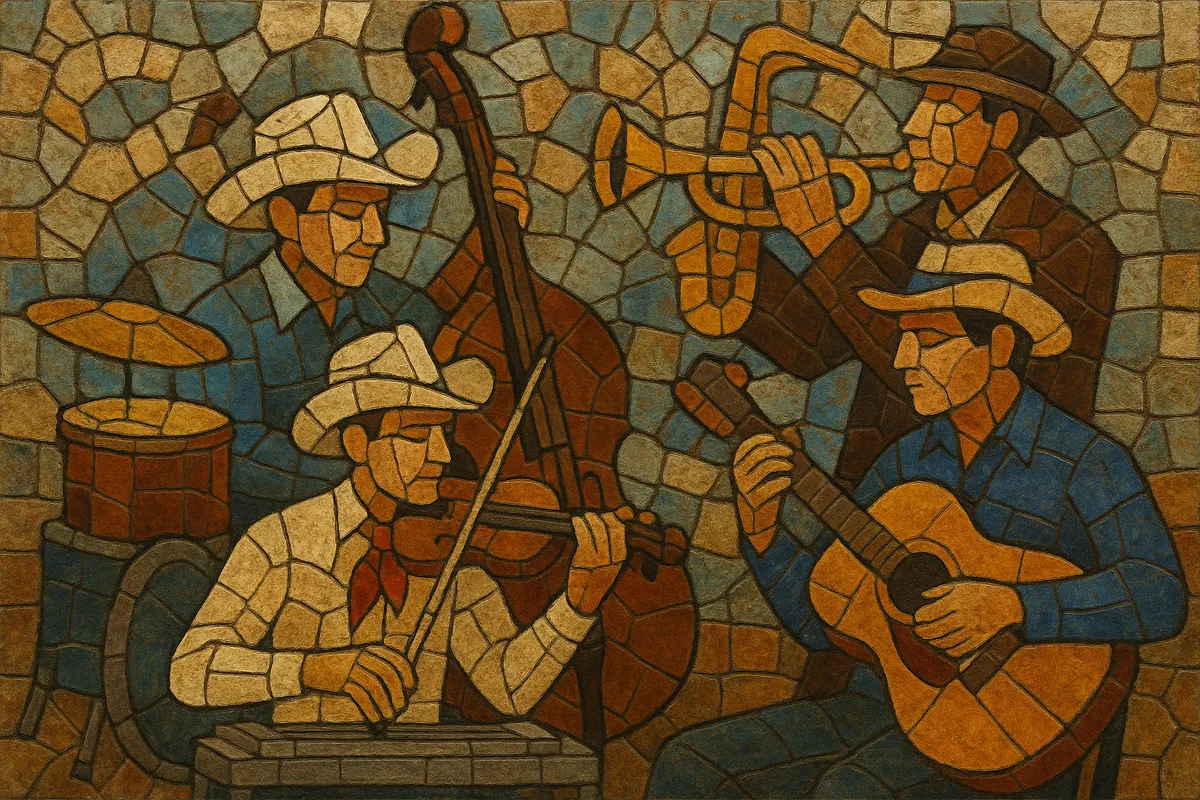
Western swing is a dance-band hybrid that fuses prewar country string-band music with the rhythmic drive and improvisational language of jazz and swing. Born in Texas and Oklahoma dance halls, it features fiddles and steel guitar up front, a strong rhythm section, and frequent horn parts, producing an exuberant, toe-tapping sound meant for two-steps, shuffles, and waltzes.
Unlike most early country styles, western swing embraces extended jazz harmonies, walking bass lines, and instrumental solos, often over 12‑bar blues or 32‑bar AABA song forms. Amplified guitars, non‑pedal steel (later pedal steel), piano, and drums gave the music a powerful, urban polish while keeping a distinctly Western flavor in melodies, repertoire, and themes.
Western swing emerged in the early 1930s across Texas and Oklahoma, where string bands entertaining ranch dances and roadhouses began absorbing jazz and blues idioms heard on radio and in urban ballrooms. Pioneers such as Milton Brown and His Musical Brownies and the Light Crust Doughboys blended old‑time fiddle tunes, waltzes, and polkas with syncopated rhythms and jazz chord voicings. The addition of steel guitar, piano, drums, and (often) horns pushed the sound toward a true swing orchestra with a Western accent.
Bob Wills and His Texas Playboys, broadcasting from Tulsa’s KVOO and packing Cain’s Ballroom, codified the style: a driving four-to-the-bar rhythm, walking bass, riffing horn sections, and plentiful solo choruses. Hits like “New San Antonio Rose” and “Steel Guitar Rag” exemplified a repertoire spanning blues, pop standards, Mexican-influenced dance forms, and cowboy songs. Amplification and tight arrangements made the music ideal for large dance halls while retaining space for improvisation.
After World War II, western swing continued to chart but gradually ceded mainstream ground to honky-tonk and, later, rock ’n’ roll. Its instrumentation—especially electric guitar and steel—and its rhythmic backbeat strongly influenced the Bakersfield sound, country boogie, and early rockabilly. Key bandleaders like Spade Cooley and Hank Thompson kept the style visible, even as tastes shifted.
The 1970s brought renewed interest through Merle Haggard’s Bob Wills tributes and the rise of Asleep at the Wheel. Contemporary ensembles such as The Time Jumpers preserve the idiom’s dance-band vitality and jazz craft. Today, western swing remains a living tradition in Texas/Oklahoma dance culture and a vital ancestor to honky‑tonk, Bakersfield country, and rockabilly.

